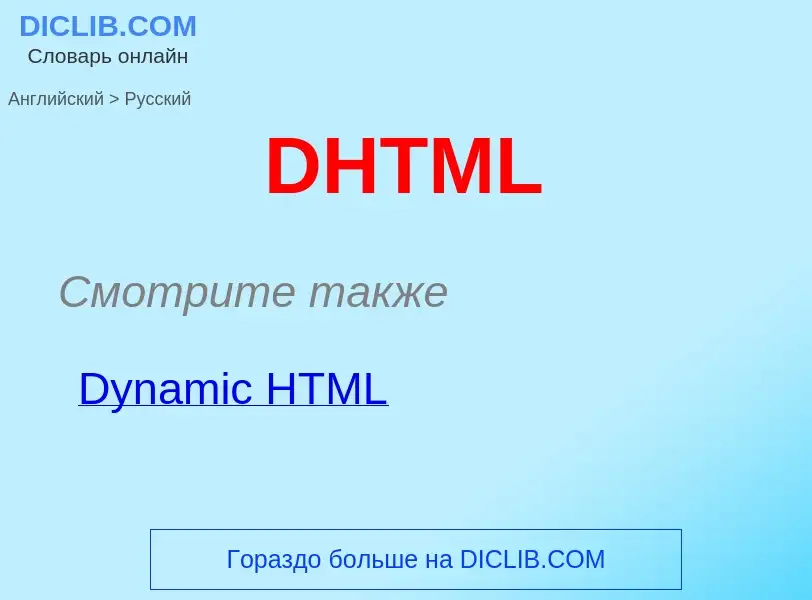Tradução e análise de palavras por inteligência artificial ChatGPT
Nesta página você pode obter uma análise detalhada de uma palavra ou frase, produzida usando a melhor tecnologia de inteligência artificial até o momento:
- como a palavra é usada
- frequência de uso
- é usado com mais frequência na fala oral ou escrita
- opções de tradução de palavras
- exemplos de uso (várias frases com tradução)
- etimologia
DHTML - tradução para russo
Смотрите также
общая лексика
динамический HTML, язык DHTML
расширенная версия языка HTML, позволяющая организовать реакцию HTML-страницы на действия пользователя (на движения мыши), не перезагружая страницу с сервера (т.е. для придания отображаемым страницам интерактивности). Страница просматривается как набор объектов (см. DOM), представление которых может быть изменено с помощью скриптов. DHTML поддерживает каскадные таблицы стилей (CSS), объектную модель документа (DOM), а также языки сценариев JavaScript, JScript, ECMAScript и VBScript
синоним
Wikipédia
Dynamic HTML, or DHTML, is a term which was used by some browser vendors to describe the combination of HTML, style sheets and client-side scripts (JavaScript, VBScript, or any other supported scripts) that enabled the creation of interactive and animated documents. The application of DHTML was introduced by Microsoft with the release of Internet Explorer 4 in 1997.
DHTML allows scripting languages to change variables in a web page's definition language, which in turn affects the look and function of otherwise "static" HTML page content after the page has been fully loaded and during the viewing process. Thus the dynamic characteristic of DHTML is the way it functions while a page is viewed, not in its ability to generate a unique page with each page load.
By contrast, a dynamic web page is a broader concept, covering any web page generated differently for each user, load occurrence, or specific variable values. This includes pages created by client-side scripting and ones created by server-side scripting (such as PHP, Python, JSP or ASP.NET) where the web server generates content before sending it to the client.
DHTML is the predecessor of Ajax and DHTML pages are still request/reload-based. Under the DHTML model, there may not be any interaction between the client and server after the page is loaded; all processing happens on the client side. By contrast, Ajax extends features of DHTML to allow the page to initiate network requests (or 'subrequest') to the server even after page load to perform additional actions. For example, if there are multiple tabs on a page, the pure DHTML approach would load the contents of all tabs and then dynamically display only the one that is active, while AJAX could load each tab only when it is really needed.

